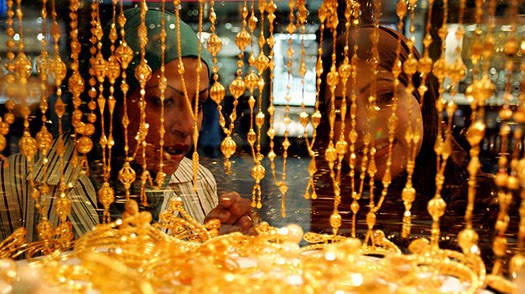Iranians have more gold at home than CBI has in reserve
Officials of the administration of former Iranian president Mahmoud Ahmadinejad published contradictory statistics about the gold reserve of Iranian Central Bank (CBI). According to the statistics, the actual reserve was 5-6 times smaller than the stated reserves.
In September 2010, former CBI governor Mahmoud Bahmani announced that the country had embarked on buying gold as the rise of global gold prices was anticipated. At the same time, he said Iran had enough of gold reserve for 15 years.
Although he did not refer to any specific figure about the gold reserve at the CBI, but said that the country’s annual gold consumption was 30-35 tons, meaning that the CBI gold reserve was about 450 tons. However, a year later, Bahmani told IRNA that the CBI gold reserve was 500 tons.
In 2007, gold was traded at $650 per ounce and the price rose to $1870 in 2011.
After the Ahmadinejad administration’s incumbency, the CBI put the country’s gold reserve at just 95 tons in 2011.
Presenting exaggerated reports was not confined to the CBI governor during the Ahmadinejad administration, so that Ahmadinejad himself announced last year that gold price was $290 in the early days of his administration. “So, we seized the opportunity and bought and stored hundreds of tons of gold,” Ahmadinejad said.
The CBI had not published any report on the country’s foreign currency and gold reserves from 2010 to mid-2013. The Customs Administration of Iran had also stopped publishing reports about gold imports since 2009.
However, the CBI balance sheet for September 2005 indicates that 21 trillion rials (about $650 million based on the dollar rate at the time) worth of gold had been reserved at the CBI, a two-fold rise year on year.
Considering the dollar to rial exchange rate at that time, the value of the gold reserve equals $2.3 billion. Contrary to Ahmadinejad’s statement, each ounce of gold was traded at $465 at that time ($14.5 per gram). So, the CBI gold reserve had been probably some 150 tons.
However, in July 2013 the then CBI head Mahmoud Bahmani, when he was preparing to pass his post over to Valiollah Seyf, announced that the Central Bank of Iran’s gold reserve are around 108 metric tons. The figure was 5 times less than the number announced by him 2 years earlier.
It seems that at the peak of having to deal with Western embargos, Iranian officials tried to dismiss the sanctions as ineffective by giving false information. They also intended to control the gold and forex market by giving false statistics.
The value of Iran’s national currency – the Rial – decreased considerably since 2010 until the end of Mahmoud Ahmadinejad’s term in office.
Each USD was sold at the price of 10,000 rials in 2010, but the figure soared to 36,000 rials in the previous year. It is around 31,000 rials now.
People's gold more than CBI
A sharp decrease in Rial’s value in the past few years forced people to turn to gold and forex market, to maintain the value of their savings.
During the last months of Ahmadinejad’s term in office, it was reported that Iranians keep $18 billion worth of foreign currencies in their homes.
According to the head of Iran’s Gold and Jewels Producers and Exporters Union Ebadollah Mohammad Vali, over 100 metric tons of gold is also kept in homes. The figure is even more than the CBI’s reserves.
The price of each ounce of gold was above $1870 in September 2011, but the figure has dropped to $1240 in global markets. So Iranians currently keep around $3.5 billion worth of gold and $18 billion worth of foreign currencies in their homes.
Mohammad Vali told Iran’s Mehr News Agency on September 10 that the uncertain economic situation forced people to buy and keep gold in their homes.
The government can encourage people to invest their foreign currency and gold in the banks, but considering the surprising decisions of the CBI under Bahmani’s management, most likely people will not trust the suggestion.
When the sanctions imposed on Iran have tightened, the Central Bank of Iran refused to pay back people’s invested gold and foreign currencies, saying they can only receive the equivalent in rial.
It is while the value of USD at the free market at the time was twice the value of the official rate. So receiving the equivalent in rial meant that people would lose half of their money.


Comments
Post a Comment